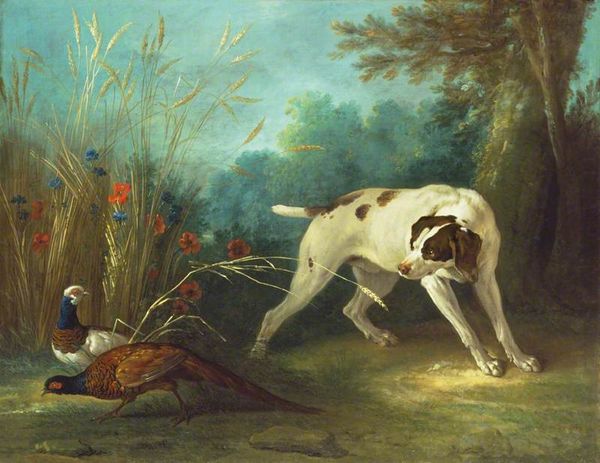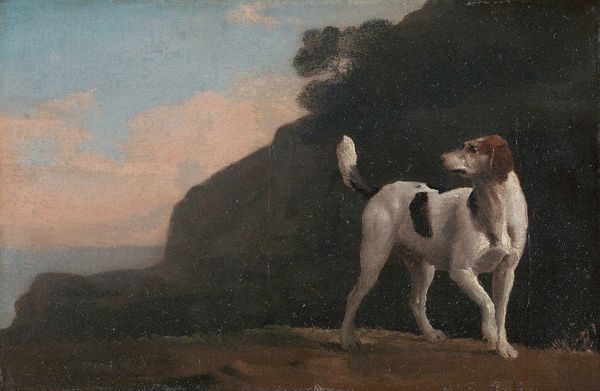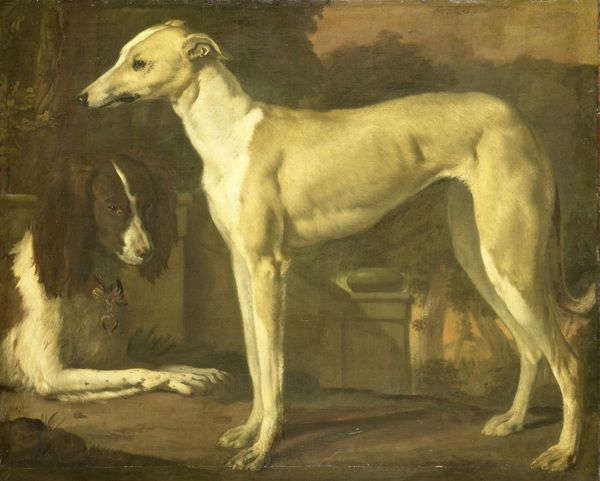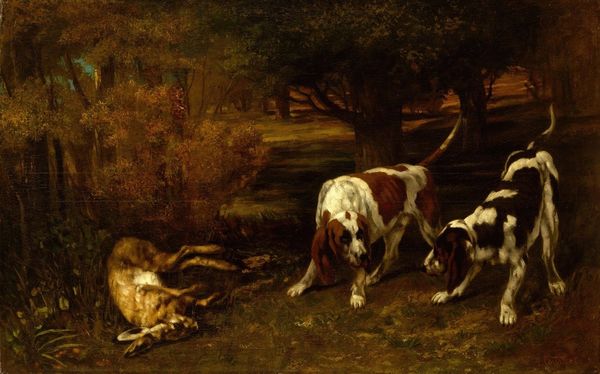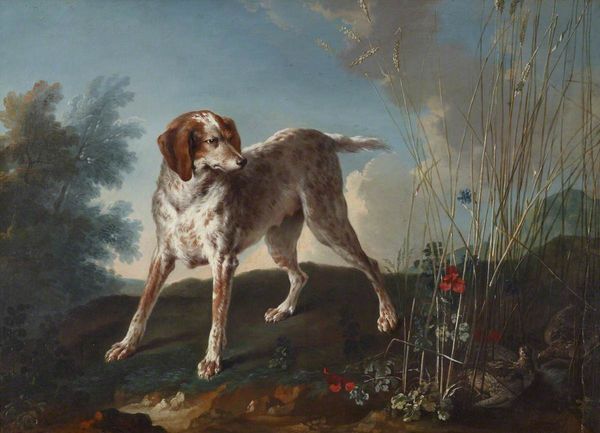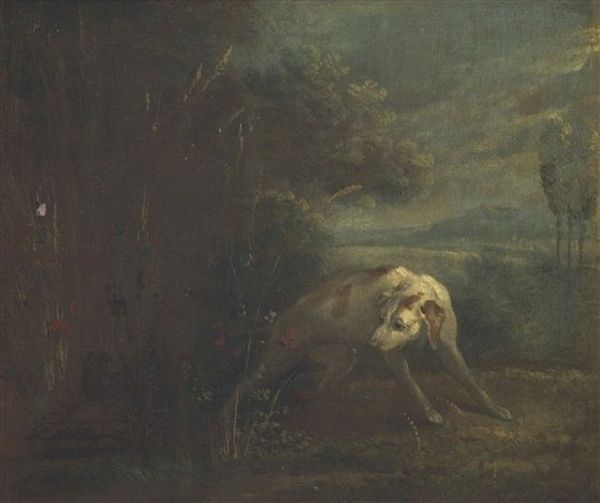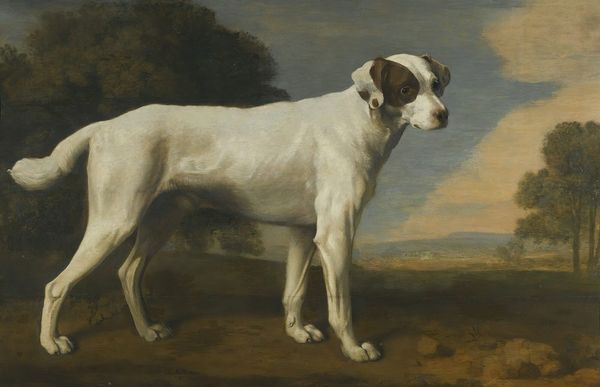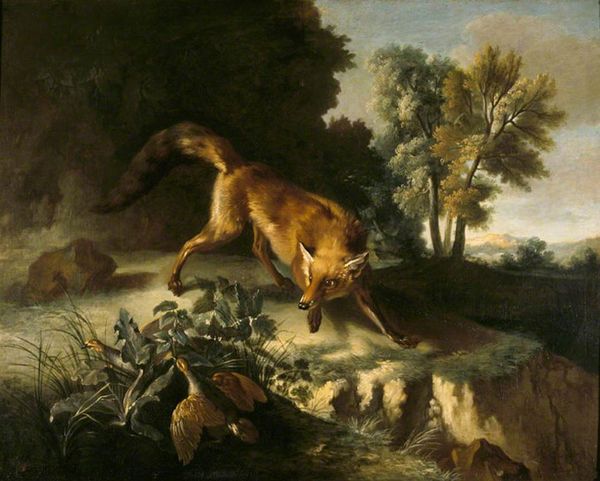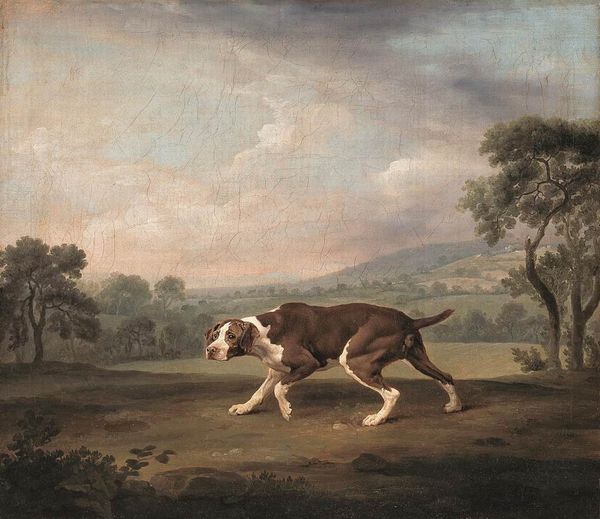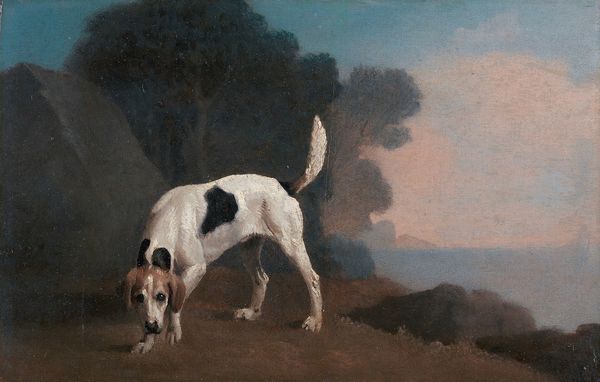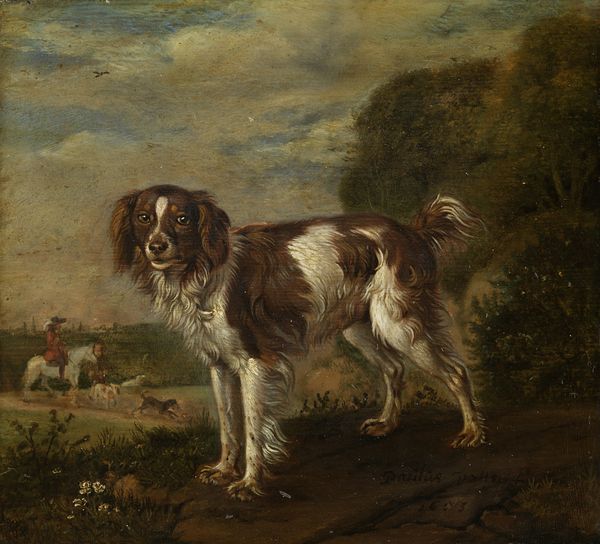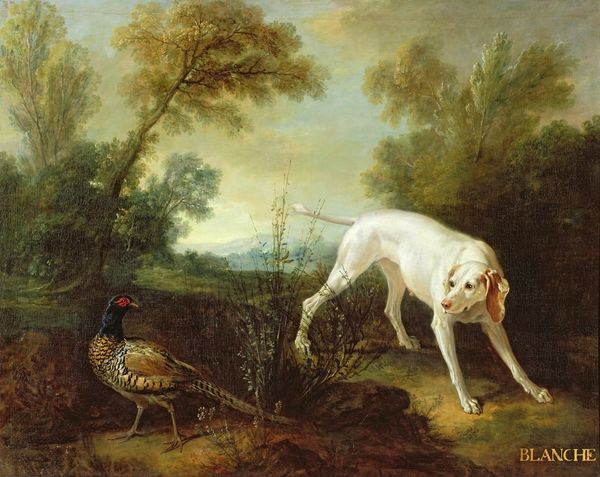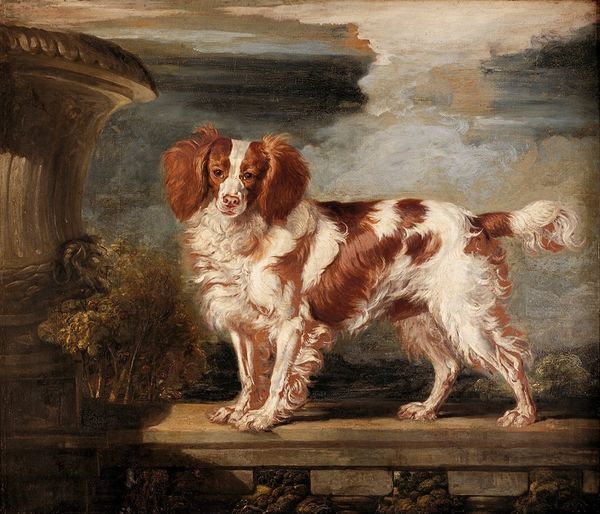
painting, oil-paint
#
portrait
#
baroque
#
painting
#
oil-paint
#
landscape
#
oil painting
#
romanticism
#
animal portrait
#
genre-painting
#
realism
Copyright: Public domain
Editor: Here we have Jean-Baptiste Oudry’s oil painting, “A Dog Pointing a Partridge.” I’m struck by how much it seems to capture a single moment in the hunt, the tension held within the dog’s pose. What are your thoughts on this piece? Curator: It's compelling to consider this work through a materialist lens. Oudry wasn't simply depicting a scene, he was participating in a system of production, patronage, and consumption. Consider the cost of the oil pigments, the canvas itself, and the labor involved in creating such a large-scale work. Who commissioned it, and what did this imagery signify for them in terms of status, leisure, and control over the natural world? Editor: So you’re saying the materials themselves and who was involved in the production give the work deeper meaning? Curator: Exactly. The very act of commissioning and owning such a piece was a display of wealth and power. The painting is not just about a dog and a bird, it’s about access to resources and the social hierarchy that enables that access. What does the rendering of nature, and specifically this hunt, reveal about that societal structure? Editor: It kind of removes the idea of art being purely aesthetic and puts it into the context of real-world production. Looking at the piece again, I wonder if Oudry made his own paints. Curator: An excellent question. Pigment preparation was a significant part of artistic labor at the time. Consider also the division of labor within Oudry's studio: Did he have assistants who prepared materials or worked on specific elements of the painting? Investigating these material processes exposes the complex network of labor underpinning the artwork. Editor: I hadn’t considered the materials used beyond their aesthetic qualities, but this really broadens the idea of art for me. Thank you for that. Curator: And for me, you highlight how focusing on form creates accessibility. I will be more aware of my assumptions on access from now on.
Comments
No comments
Be the first to comment and join the conversation on the ultimate creative platform.
